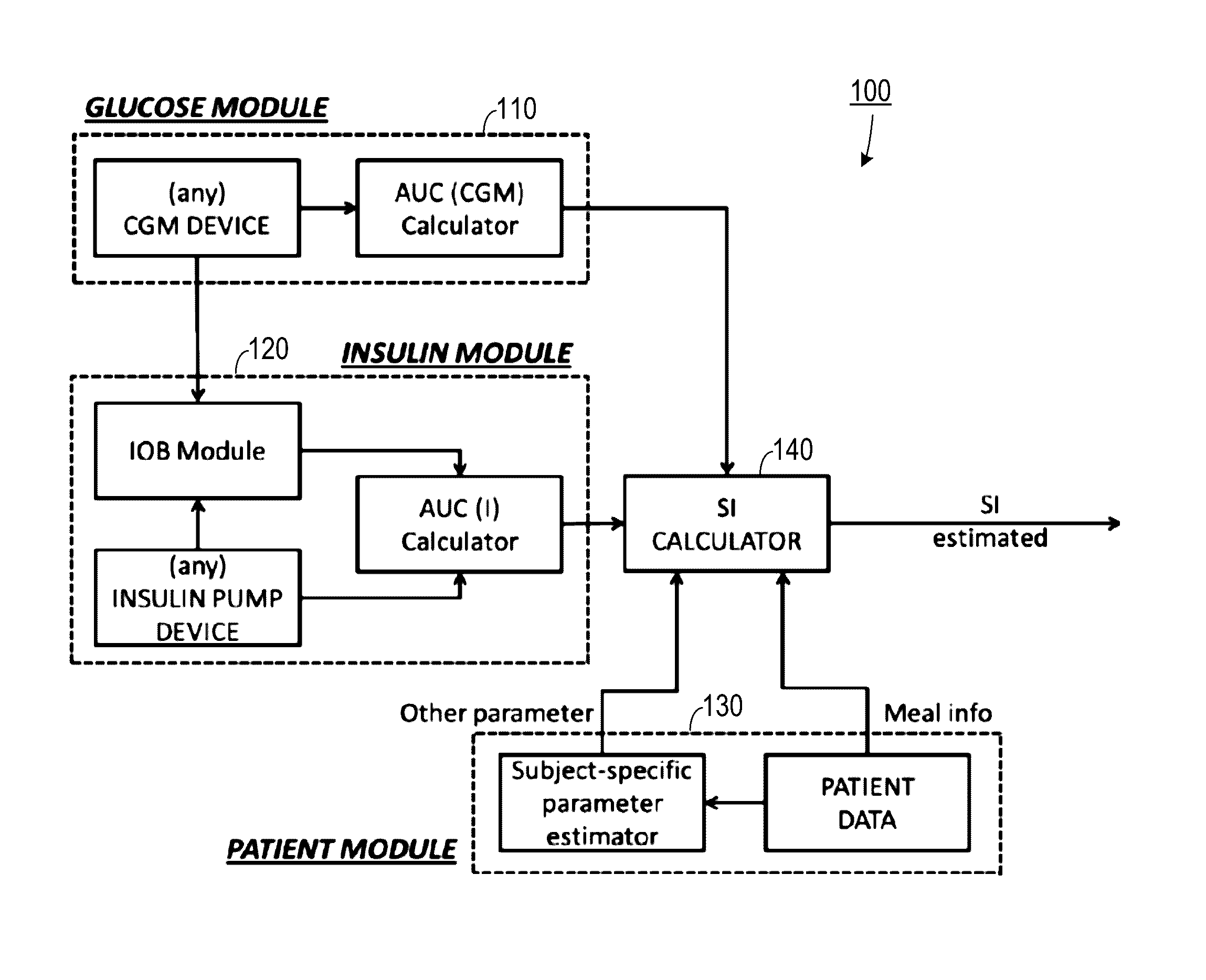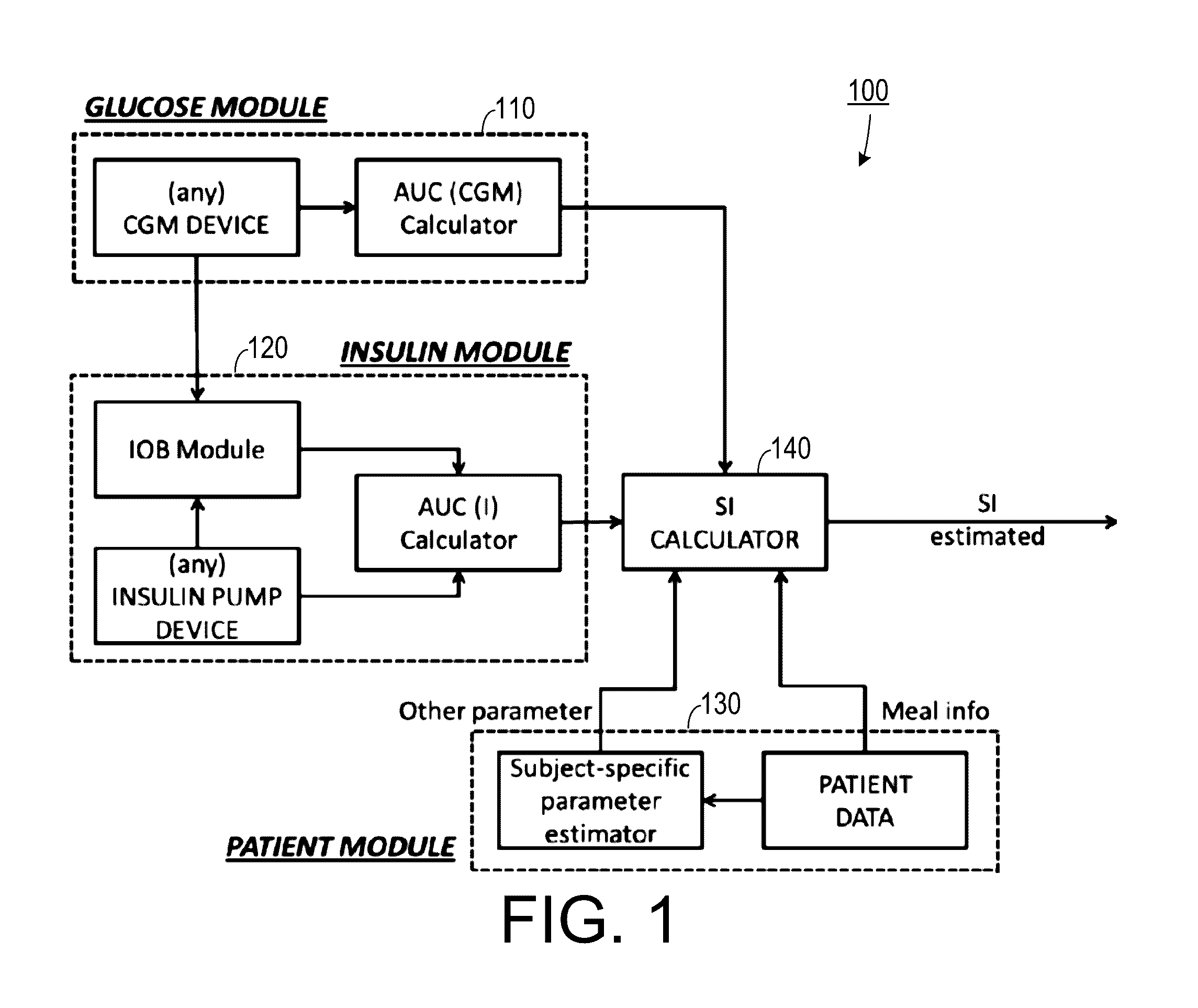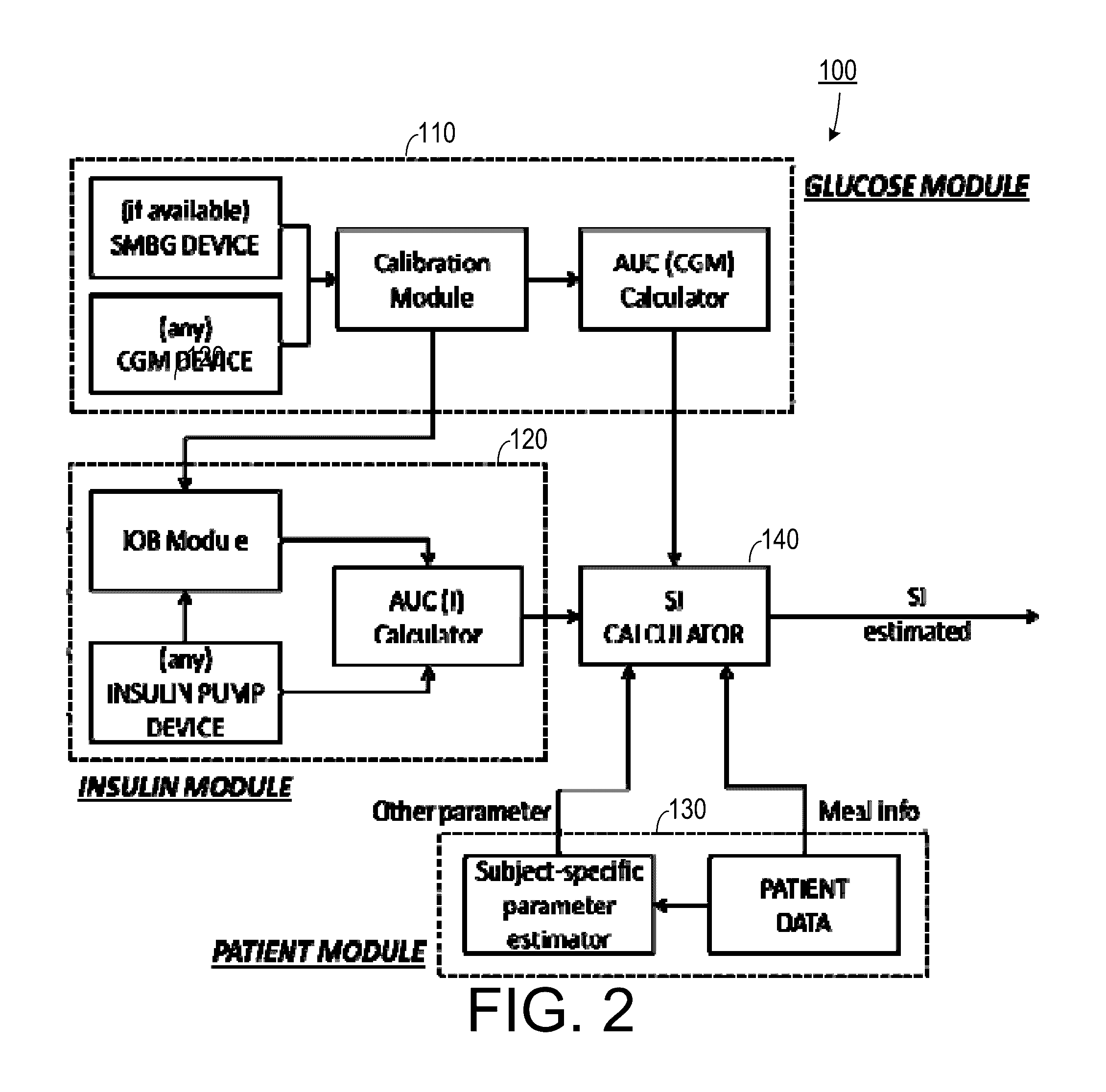Estimation of insulin sensitivity from CGM and subcutaneous insulin delivery in type 1 diabetes
a type 1 diabetes and insulin sensitivity technology, applied in the field of medical systems, can solve the problems of inability to accurately predict the sensitivity of type 1 diabetes, the plasma glycaemic level exceeds the normal range, and the inability to meet the needs of patients, so as to improve the control therapy and facilitate the implementation
- Summary
- Abstract
- Description
- Claims
- Application Information
AI Technical Summary
Benefits of technology
Problems solved by technology
Method used
Image
Examples
Embodiment Construction
[0028]A preferred embodiment of the invention is now described in detail. Referring to the drawings, like numbers indicate like parts throughout the views. Unless otherwise specifically indicated in the disclosure that follows, the drawings are not necessarily drawn to scale. As used in the description herein and throughout the claims, the following terms take the meanings explicitly associated herein, unless the context clearly dictates otherwise: the meaning of “a,”“an,” and “the” includes plural reference, the meaning of “in” includes “in” and “on.”
[0029]All metabolic parameters change over time, thus from a long-time collected data it is not possible to provide a good estimation of these quantities for optimizing the treatment therapy of a T1DM patient. This is particularly true for insulin sensitivity because it usually changes with the time of day and with the activities of a person. Therefore it's necessary to define methods for tracking the changes in insulin sensitivity for...
PUM
 Login to View More
Login to View More Abstract
Description
Claims
Application Information
 Login to View More
Login to View More - R&D
- Intellectual Property
- Life Sciences
- Materials
- Tech Scout
- Unparalleled Data Quality
- Higher Quality Content
- 60% Fewer Hallucinations
Browse by: Latest US Patents, China's latest patents, Technical Efficacy Thesaurus, Application Domain, Technology Topic, Popular Technical Reports.
© 2025 PatSnap. All rights reserved.Legal|Privacy policy|Modern Slavery Act Transparency Statement|Sitemap|About US| Contact US: help@patsnap.com



